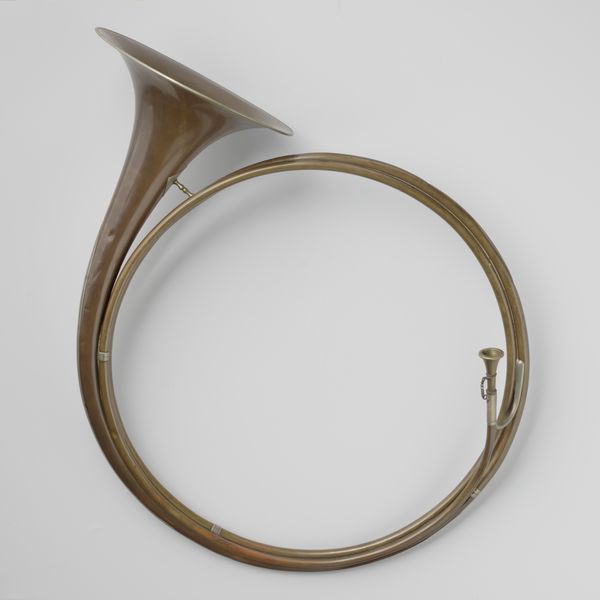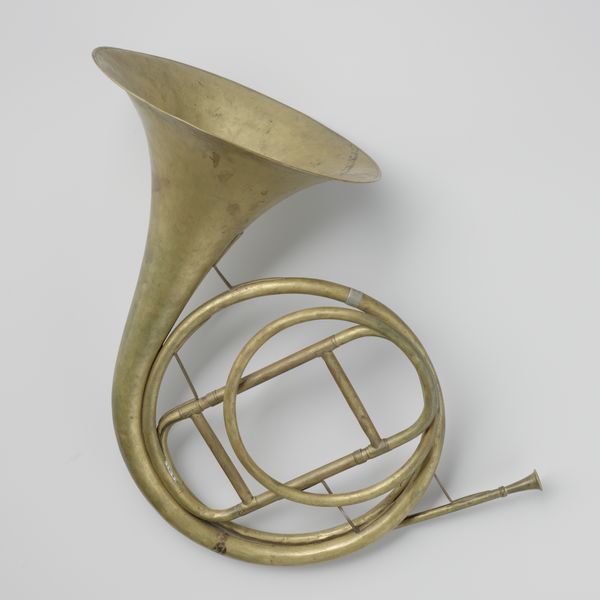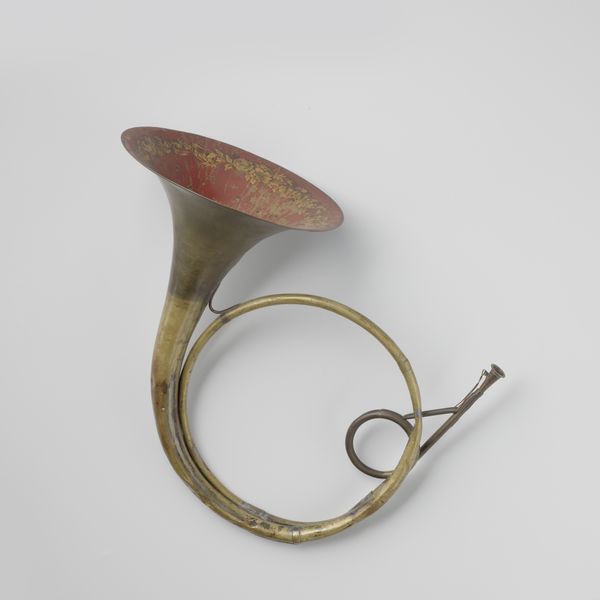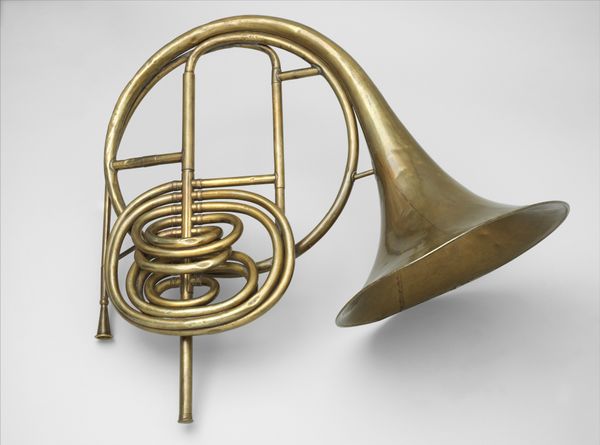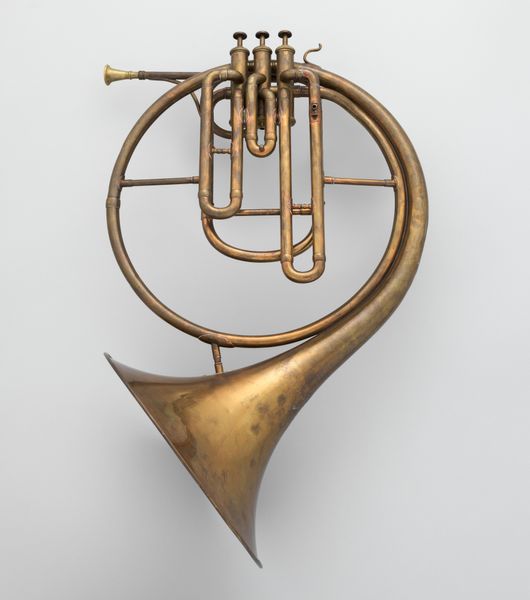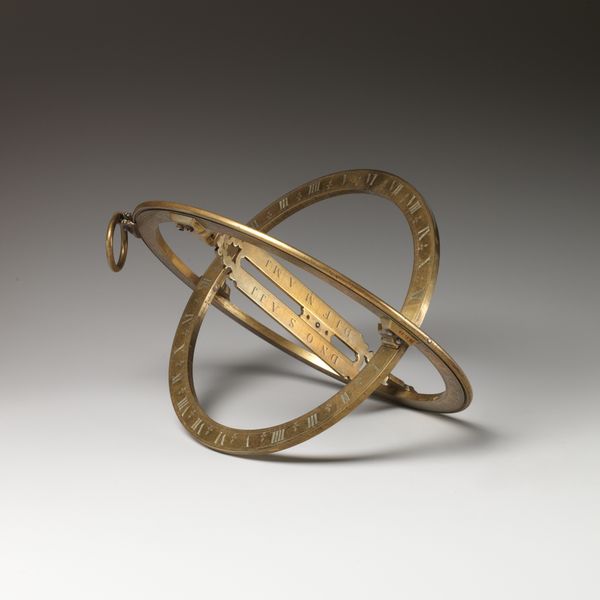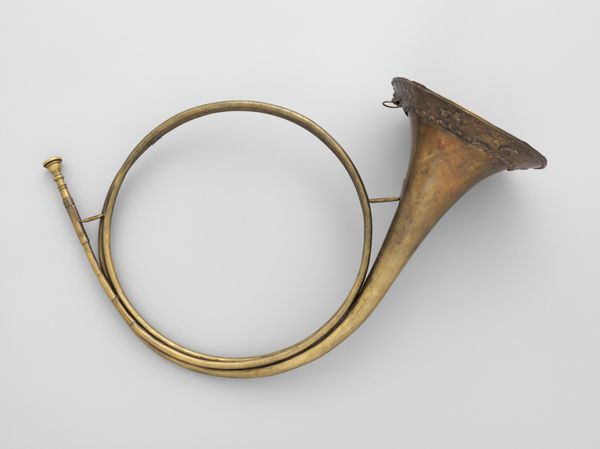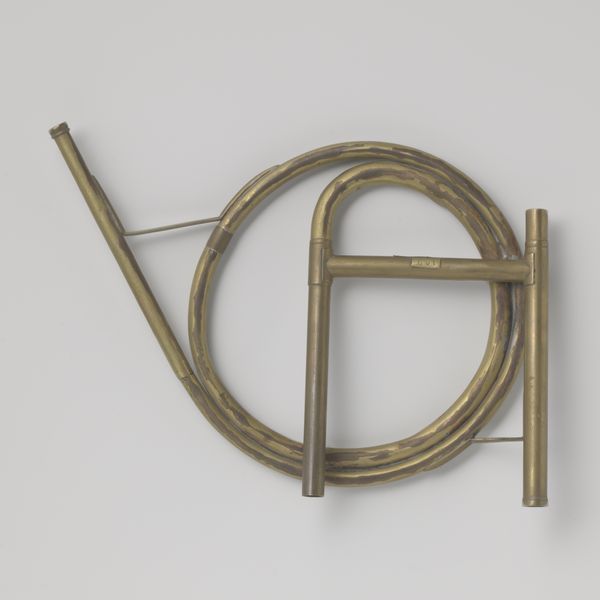
brass, metal, sculpture
#
neoclacissism
#
brass
#
metal
#
sculpture
#
france
#
musical-instrument
#
decorative-art
Dimensions: Diameter (of bell): 10.5 in. (26.7 cm)
Copyright: Public Domain
Curator: The sleekness of this horn, its circular form, almost feels...meditative? Editor: Let's delve into this beautiful object. Here we have a hunting horn in D, also called a 'Trompe de Chasse,' crafted by Courtois père in France, sometime between 1789 and 1801. It is constructed from brass, a durable metal lending itself well to sound. It sits now at the Metropolitan Museum of Art in New York. Curator: 1789... the timing alone gives me chills! Think of the political context! This wasn't simply a musical instrument, but an accoutrement of the aristocracy, wasn't it? Did its use and meaning change during the Revolution? Editor: Absolutely. Hunting horns were firmly enmeshed in the visual culture and social rituals of the Ancien Régime. Noblemen used the hunt as an expression of dominance and power, carefully constructed for political optics. Then revolution! One can imagine the horn as a potent, ambivalent symbol in flux. Curator: It's almost defiant. A loop within itself—a sound chasing its own tail. The brass almost seems to yearn for something different, almost a new symbolism, perhaps the horn’s circular form could be interpreted as an Ouroboros symbolising self-renewal and adaptation. Editor: A poignant read, the circularity is critical. During this time in French history we also see a lot of revolutionary festivals trying to incorporate objects that are representative of the old regime in ways that show France moving into a new chapter. Curator: Did they intentionally preserve its sonic quality while transforming its symbolic register? A kind of reclaiming? Editor: Quite possibly. What I think is important to remember here is that the music is important and how this particular work and its historical period of time allowed for the advancement in culture and in some instances society. The object became an allegory. Curator: Fascinating! The layers of social, sonic, and symbolic context really enrich the artwork, its very aura, offering powerful lessons even today. Editor: Indeed, viewing "Trompe de Chasse in D" this way invites consideration of who holds power, and the instruments, literal and otherwise, they use to articulate and protect it.
Comments
No comments
Be the first to comment and join the conversation on the ultimate creative platform.
